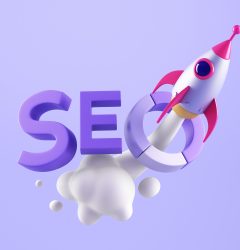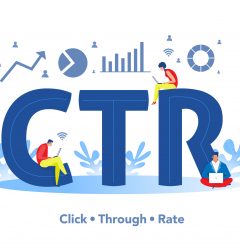16 Jul

SEO Traffic Best Practice
In our recent article, we informed you of some of the most important SEO traffic areas. In this article we will be looking more In-depth in the are of the best practices that surround SEO Traffic.
Like technology evolves, so does the internet, and in this evolution so do our search engines with that the requirement for best SEO practices or simply what makes it easier for you to rank changes. This article will be discussing a few of those practices.
Now we will be discussing the best set of practices to set your website and blogs about your competition. This will get you higher ranks on search engines. It is a certainty that in researching how to optimize to have seen multiple tactics to use in ranking your website or blog however getting a basic understanding is the best way to go.
So go with me!
Implement Your Main Keywords Early
You don’t limit the number of times you use your keywords on your website or in your blogs. You also need to understand the placement of such keywords makes a whole host of differences. It is highly recommended that your keyword (s) are mentioned at least once in your introduction.
Why Does This Matter?
It is a fact that Google puts more weight behind pages that use the targeted keywords earlier in their content for websites or blogs.
For example, if you are writing software engineering you need to ensure that the words “software engineering” are at least once in the top thirty (30) words of said content.
Present Content Based on Targeted Keywords
In developing your content, if ever you reach any difficulty there are tools that are data-driven in that analyze for you keywords to use, possible competition, and various topics that are similar.
Keyword planning is one of the top most important steps as it puts you in line with your possible with your target audience.
What Tools Are to Do For You:
Tools usually provide orders or ideas on how to write your content, here is how it works.
- Primary Keyword: primary keywords are those that are used in heading or main topics in some cases you will see it being referred to as h-tag one.
- Secondary Keyword: these keywords are used in the area of sub-headings quite often and can also be seen in the body of the article.
- Support-Language: these are seen throughout the body of your article/content. While we may consider them minor they are gravely important.
They are going to be events where a secondary keyword carries a lot of weight, whenever this happens try to build these in a primary. This means building an article around it, when this is done link these topics into each article this will aid in the ranking on search engines.
In the previous article (What Is SEO Traffic) you were informed to make your article readable for your audience as this also aids in ranking. You are now being advised to breakout sub-topics (h-tag two) into main topics (h-tag one) as this helps manage bulk information or overwriting.
In managing to overwrite you will also avoid duplicating your content. This is a must to avoid as stated by Google, (“having duplicate or near-duplicate versions of your content across your site”) https://developers.google.com/search/docs/beginner/seo-starter-guide, as this can prevent your ranking.
While writing to avoid duplication adequate information must be provided on the to being written about.
The Effect of Titles and Headings
With this subheading, you may be thing what is the difference between title and heading. While they do have similarities, they are also different and serve different purposes.
For each website you create your title on there is the <head> element, which serves as a container for each page created for said website. This consist of important information concerning display and of the website such as analytical tools and title for varied pages.
Optimization of Site Speed
Site loading speed is one of those rare factors that most of us never thought of would affect our ranking.
This is also natural as boosting your site speed doesn’t only aid in ranking but customers enjoy using a site that is quick to load and this can improve conversion.
It is true that after testing and launching you sometimes get feedback that your website is not at the speed which you wanted. It is also easy to blame the device that is being used to visit the website at the moment however, to limit the blame game or total elimination you can use a tool by Google called Lighthouse.
With the Google Lighthouse tool, you are able to run your website and see all that is slowing you down. This can be, but, not limited to images, excess code, and more. You will then get feedback on exactly what those are and from there you will be able to make an informed decision that best suits you and your business.
Image Optimization
Sometimes the image is the last thing we consider when it comes to website optimization.
Yes, your website image aids in the responsiveness and speed of your site which affects speed, thus affecting optimization, and can, in turn, amper your conversion, affecting ranking.
If you are using images on your page which is usually recommended you also want to ensure you are optimizing for SEO.
There are, however, two best practices that you can apply to optimize images, they are as follow:
- Using a descriptive file to name images: While Google is unable to see your images at the moment Google uses your image file name to understand the image and the content behind it.
- Using ALT text on image: According to the Google Search Central document, Google relies heavily on alt text placed on your image to understand it. In understanding your image and once correctly linked to the page being placed on Google will be able to correctly display the image once in the correct search to your audience.
It also helps to add images as close to the related content as possible, in doing this ensures the images are sharp and never blurred, it also helps if the important text is not embedded in the images.
Getting Out Amazing Content
In our previously published article we spoke about publishing great content that interest your audience and this should include:
- Adequate images that depict what the written body of the article is saying.
- Keywords that explain what the headings are.
- Written content that is clear and not repetitive hence losing its rightful meaning.
It is true that what is considered, “Amazing Content” does change as the digital space changes. This means every two to three years this may change.
Conclusion
Always remember reaching your target audience is ideal for your SEO ranking and there are important parts to having that done correctly.
- Main keyword implementation
- Correct usage of keywords in content not overusing
- Titles, headings, and subheadings
- Site responsiveness
- Video and image optimization





